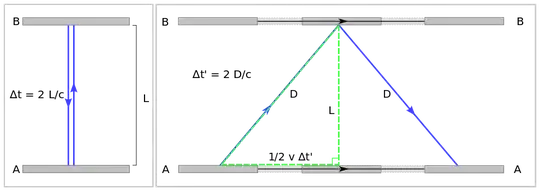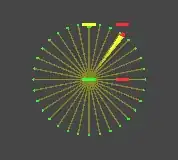According to the typical though experiment to derive the time dilation:
a stationary observer would see that light travels more distance, and since light speed is constant, it must follow that time must slow down.
What I am having a hard time understanding is not the conclusion, but rather the premise:
Why/how does the light emitted "know" to travel in a diagonal from the point of view of the stationary observer?
Why doesn't the stationary observer see the light go straight "north" from his/her own frame of reference?
Where is light getting its "west" - "east" velocity component from (if velocities don't add up when dealing with light)?
What would happen if the light was emitted from a stationary light source instead? Would the moving observer see the photon miss the mirror in a diagonal in the other direction?
How does a photon "know" it was emitted from a source in a train and thus has to move in a diagonal (from the pov of the stationary observer), and to move straight "north" if emitted from a source in the stationary frame of reference?
Image by: By Sacamol - Own work, CC BY-SA 4.0, https://commons.wikimedia.org/w/index.php?curid=48778704

